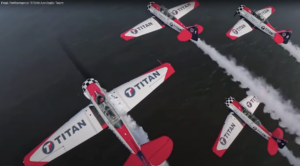As the Drone Girl, I’m always getting questions from new pilots, like this one about whether recreational drone pilots need to register with the FAA! To help me answer this one, I’ve enlisted the help of Patrick Sherman. Like me, he’s a long-time drone enthusiast who has risen to become a professor at Embry-Riddle Aeronautical University specializing in, you guessed it, drones!
One reader wrote in to say: I want to start learning how to fly drones. I’m planning to start with something like the DJI Mini 3 Pro, which weighs less than 250 grams, but all of the rules are really confusing. First, am I required to register it? Also, do I need to take The Recreational UAS Safety Test (TRUST) before I can start flying?
Patrick Sherman, who is also the author of the book “Getting Started with Drones and Model Airplanes” knows a thing or two about launching a drone business. Given that, I asked him to help me answer this question
Here was his response (and if you want more of his insights, grab a copy of his book today!):
Great questions! And, yes, the rules are absolutely a bit confusing, so let’s get them figured out for you.
Understand the difference between recreational versus commercial drone flying
First of all, I’m making the assumption that you are going to be flying for recreation because you’re just starting out. This is just for fun: You’re not intending to earn money by taking aerial photographs or to use your aircraft to assist a volunteer search-and-rescue organization, or something like that.
If you are planning to use a drone professionally, the Federal Aviation Administration (FAA) requires you to register it regardless of how much it weighs. You’re also required to become a certificated Remote Pilot in Command by passing the Part 107 Airman Knowledge Test (AKT). However, again, assuming that you’re flying for fun and your aircraft weighs less than 250 grams, then you are not required to register it with the FAA.
Passing TRUST
However, as you are clearly already aware, there is still a test you have to take: The Recreational UAS Safety Test (TRUST), which the FAA requires no matter how much your aircraft weighs. The good news is that it’s free. Plus, it’s so easy that you literally cannot fail.

The FAA partnered with a number of organizations including the Academy of Model Aeronautics, the Boy Scouts, and my own employer, Embry-Riddle Aeronautical University, to host the test on their websites. A quick Internet search will provide you with a plethora of options.
You don’t even need to create an account! Simply, take the test, which includes a series of short, informational presentations that tell you how to answer each question. And, if you get a question wrong, you get another shot at it. Literally, you can’t fail. At the end of the test, you’ll be provided with a certificate. You should download it, print it out, and keep a copy with you while you’re flying.
Have fun – and fly safe!
-Patrick Sherman
Are you starting out as a remote pilot? Do you have other questions you’d like Patrick to answer? The chances are that he already has answered it! Check out his new book, “Getting Started with Drones and Model Airplanes,” published by Aviation Supplies & Academics – the leading publisher of aviation-related books in the United States. Copies are available on Amazon!
If you have a question for Drone Girl, contact her here.
The post Do recreational drone pilots need to register and pass TRUST — even if their drone is under 250 grams? appeared first on The Drone Girl.








